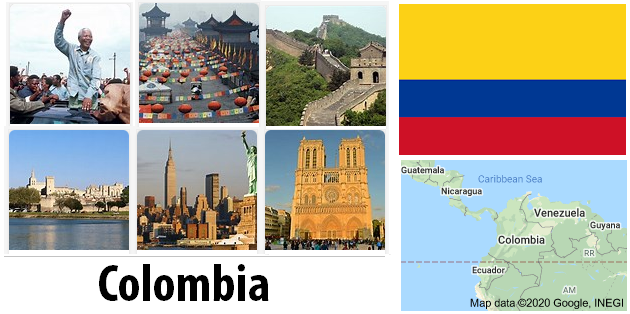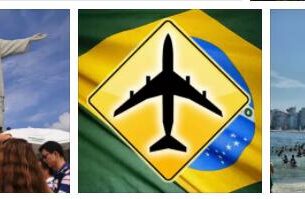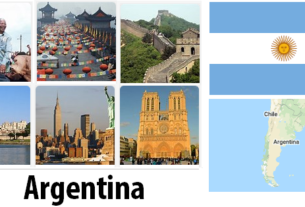The Aztecs and Mayans for Mexico and the Incas for Peru are known to all; on the contrary few know who the Chibcha (pron.Cibcia), the ancient inhabitants of Colombia. Scholars of pre-Columbian civilizations have ensured that they were by no means inferior to the others, however this cannot be documented because everything was destroyed and preyed upon at the time of the Spanish conquest.
Despite the name of Colombia, this land was not discovered by Columbus, although so called in his honor. The first European to set foot on this earth was Alfonso de Ojeda, one of Columbus’s companions. He landed there for the first time in 1499.
The task of breaking down the Chibcha kingdom was entrusted to Jimenez de Quesada who, from 1536 to 1538, led an expedition across the territory clashing with the natives; he was the founder of the city of Santa Fé de Bogotà, built on the ruins of the indigenous capital.
Quesada, who was a mere soldier, became the governor of the new territory of the Spanish Empire.
In 1563 Colombia was erected as an “autonomous presidency”, a sign that it was recognized a certain importance and in fact profitable emerald mines had been discovered and the colonists planted flourishing farms everywhere.
Such prosperity attracted the attention of the corsairs who, dependent on England, sailed the seas of the West Indies. First of all the very famous Francis Drake who repeatedly attacked the Colombian coasts, sacking everywhere, and returning to England always loaded with booty.
As happened with the other colonies of South America, colonization by the Spaniards who founded cities and villages began on a large scale in Colombia, making use above all of the work of the missions. The overwhelming power of the conquerors soon generated the oppression of the natives and in order to make the conditions of the latter more human, a number of principals were promoted, among which the first: Anders Diaz Venero de Leiva, followed later by Antonio Gonzales (1569). A certain boost was also given to public education and to Juan Borja (1605/1618) we owe the merit of writing a grammar of the Chibcha language; but a remarkable work in this sense was carried out by religious orders, especially Dominicans and Jesuits.
Of course there was no lack of difficulties of any kind due to rebellions that led to territorial insecurity and the continuous dangerous coastal raids that continued until the mid-seventeenth century. Against these attacks the presidents’ action was almost nil.
Colombia was first placed under the authority of the Viceroy of Peru; in 1718 the sovereigns of Spain raised this rich
colony to the rank of Viceregno; to it the territories corresponding to present Ecuador and Panama were united and everything took
officially the Spanish name of “Nueva Granada”. There was then a period of great progress whose merit goes to some of the thirteen viceroys who took turns at the helm of the town, the first of which was Sebastian Eslava. He started building roads and started other works. In 1753, the mint and a hospital in Santa Fé were built under the viceroy Josè Solis Folch de Cardona; in 1751 don Pedro de la Cerda organized the finances. But the action of private individuals contributed much to development, mainly from the intellectual side. Greatly influenced the work of the illustrious botanist Don Josè Celestino Mutis; colleges and educational institutions were created, and important theaters such as the “Coliseo” in Bogota were also built. At the same time there was a remarkable economic development; ports and aqueducts were built and regular postal services were established; free trade came (1768) and work in the mines was perfected.
The ancient colonists had now become wealthy industrialists and landowners. It was natural, at this point, that the first wishes for greater autonomy from the mother country began to arise. In 1761 there was a first uprising of the
“Comuneros” (a kind of secret political republic, republican), about the imposition of a heavy tax by Spain. Everything then went back to normal as the demands of the rebels were met.
The last decade of the eighteenth century was the most favorable historical period for rebellions. In 1794 Antonio Narino, a Colombian professor and journalist, sincere friend of the Creole population, expressed the feelings of his people by translating the “Human Rights”, the card that had been the foundation of the French Revolution. See Countryaah for population and country facts about Colombia. This act of liberal propaganda earned him a trial and ten years of deportation, but by now events were precipitating to the detriment of Spain.
Help for the Colombian independence activists was coming precisely from European events. In 1810, in fact, Napoleon took over Spain. It was a good time for the revolt. The viceroy was deposed, the independent republican state was proclaimed and the presidency of the republic, which lasted five years, was conferred on Antonio Narino.
But with the fall of Napoleon Spain regained its independence and for a period of 4 years, from 1815 to 1819, Colombia returned to the Spanish colony.
In 1819, however, the man who was called the “Libertador de Colombia”, Simon Bolivar, entered the scene; he with his lightning victories in Vargas, Tunja occupied the street of Bogota, defeated the Spaniards on the banks of the Boyacà river and entered the capital on 10 August amidst the cheers of the people.
On December 17, 1819, a Congress was held in Angostura (Venezuela) which decreed the birth of the “Republic of Colombia”, made up of “New Granada”, Venezuela and Ecuador. The center of government was a new city that took the name of Bolivar and Simon Bolivar was the first President; the vice president was General Santander.
The economic situation in Colombia, due to wars and revolutions, had worsened considerably, the population was aggravated by heavy taxes and in short the colonization had been stopped and progress had stopped. Furthermore, the state as conceived by Bolivar, who dreamed of a great Confederation of Latin America, could not go. Disagreements arose between federalists and unionists; The conflicts with Bolivar were worsened also by the liberal party of Santander and the conflict arose manifested incurable in March 1828, when a convention met in Ocana to bring about reforms to the then existing Constitution.
The work of this convention was suspended and Bolivar assumed the dictatorship of the country. In September of the same year there were revolts aimed at restoring constitutional laws and in November 1829 Venezuela separated from the union. In May 1830 Ecuador also declared itself an independent state and so, having finished his dream, Bolivar, embittered and disappointed, withdrew from political life and in December 1830 he died.
The Colombian reality was far from good; The economic administration was in disorder, the owners did not intend to pay taxes, the troublemakers of all kinds, intolerant of the political order, created constant agitations to seize power. In this situation, President Santander, who initially had declared that he wanted to govern only by applying laws, was forced to use force to tame the repetitive rebellions.
But to disturb the slow recovery a civil war broke out in 1834 following the suppression of the convents of the Friars Minor. The bitter struggles continued for a long time and finally, in 1841, with the victory of the moderates of Pedro Alcantara Herran, there was a period of calm and progress. Public education, roads, post offices were favored and the compilation of laws, known as the “Recompilacion Granadina”, was completed.
With the subsequent president Tomas Cipriano de mosquera the project of the Bogota-Magdalena river railway was traced and the military school was established.
In 1849 the liberal party of General Josè Ilario Lopez came to power and immediately linked his name to various reforms including the abolition of slavery and the death penalty for political crimes and introduced universal suffrage.
In 1853, President General Don José Maria Obando, a new Constitution was promulgated in which the powers of the President were limited and the number of military personnel decreased. Conflicts immediately arose which led to a coup d’état by General Josè M. Melo, who took over the government, operating a real dictatorship; but then he was in turn removed, tried and sentenced together with Obando and the power passed temporarily into the rooms of Manuel M. Maliarino and then, with regular elections, into those of Mariano Ospina Rodriguez.
In 1855 Colombia was divided into 8 compartments, or states, with their territories. They were: the independent state of Panama (’55), that of Antioquia (’56), that of Santander (’57) and finally those of Cauca, Cundinamarca, Boyacà, Bolivar and Magdalena. In 1863, after a civil war, during the presidency of Tomas C. de Mosquera, these states that had given birth to the “Confederacion Granadina”, adopted an identical Constitution, traced on that of the United States of America, under the name of ” Estados Unidos de Colombia “.
Mosquera, a man of great character, attempted to reconstitute the state as Bolivar had wished, but clashed with Ecuador (and other allies) who did not join the negotiation; he was re-elected a second time to the presidency in 1866, and the following year he proclaimed himself a dictator, but was deposed by General Santos Acosta and in 1868 power came into the hands of Santos Gutierrez.
A decade of tranquility began in which even the subsequent presidents were able to devote themselves to works of peace, giving considerable impetus to public education and public utility works.
In 1876 other conflicts broke out against the federal government which, however, succeeded and reappeared both with the elections of 1880 and with those of 1884, with the election of Don Rafael Munez as president.
In this period the real internal reconstruction of Colombia began.
Convinced antifederalist, Munez convened a National Congress which on 10 December 1885 issued a “Constitutional Reform Agreement” with a Constitution that established that Colombia was a United Republic on the fundamental lines maintained to date.
But even this was not enough to give the government peace of mind and once the Munez left politics in 1892, after having been elected three times, and after two other presidencies, yet another unfortunately serious revolt broke out under Josè Morroquin. The serious struggles ruined finance and Panama in 1903 broke away from the union and became an independent state.




